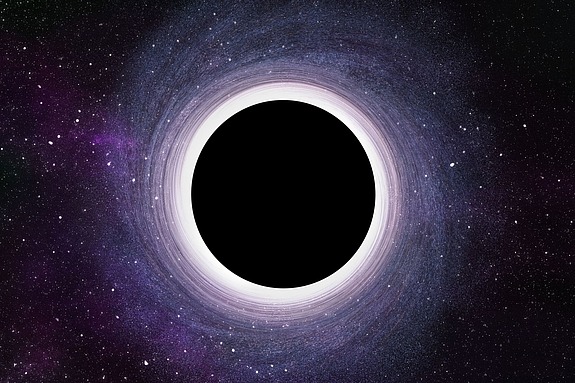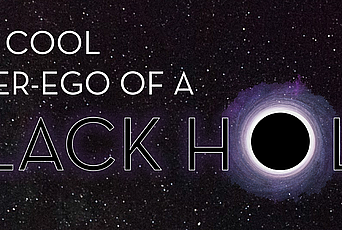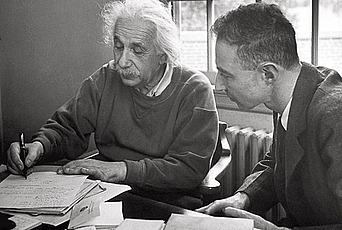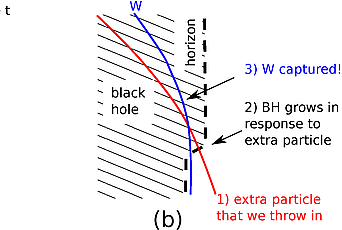Public Lecture: The Cool Alter-Ego of a Black Hole
Press Contact

Juan Maldacena, Carl P. Feinberg Professor in the School of Natural Sciences, and Member Douglas Stanford will give the public lecture “The Cool Alter-Ego of a Black Hole,” on Friday, May 4, which will take place at 5:30 p.m. in Wolfensohn Hall on the Institute campus. The lecture will be followed by a panel discussion moderated by Robbert Dijkgraaf, IAS Director and Leon Levy Professor.
Black holes are fascinating objects predicted by Einstein’s general theory of relativity. They are spacetime geometries where the flow of time is distorted in a major way. Stephen Hawking showed that quantum mechanics implies that black holes emit thermal radiation so that they are not completely black. Maldacena and Stanford will explain and review these results, which have inspired many further developments. As an example, they will discuss how information sent using the quantum mechanical phenomenon of teleportation translates into a trip through a wormhole connecting two black holes.
A Professor in the Institute’s School of Natural Sciences since 2002, Maldacena has proposed a relationship between quantum gravity and quantum field theory, known as the anti-de Sitter/conformal field theory (AdS/CFT) correspondence, which elucidates aspects of both theories. In addition to studying this relationship further in order to understand the deep connection between black holes and quantum field theories, Maldacena’s work focuses on quantum gravity, string theory, and quantum field theory, as well as the connection between string theory and cosmology.
Maldacena was most recently recognized with the 2018 Lorentz Medal of the Royal Netherlands Academy of Arts and Sciences for his seminal contribution to the understanding of the quantum physics of black holes. In addition, he is a recipient of the Breakthrough Prize’s inaugural Fundamental Physics Prize, the Dirac Prize and Medal of the International Centre for Theoretical Physics, the Dannie Heineman Prize for Mathematical Physics, the American Physical Society’s Edward A. Bouchet Award, and a MacArthur Fellowship, among other honors.
Maldacena received his Ph.D. in 1996 from Princeton University. Following postdoctoral research at Rutgers, the State University of New Jersey, he joined the faculty of Harvard University, where he served through 2001. He came to the Institute as a Member in 1999, was a Visiting Professor at the Institute in 2000–01, and became a Professor in 2002.
Stanford has been a Member in the School of Natural Sciences since 2014, studying quantum gravity, quantum field theory, and string theory. He has worked on the AdS/CFT description of black hole interiors and the relationship to chaotic dynamics in quantum field theory. Stanford, whose IAS Membership is funded by the Simons Foundation, was awarded the Breakthrough Prize's 2018 New Horizons in Physics Prize, which recognizes early-career researchers who have produced important work in fundamental physics. Stanford was cited by the prize committee for profound new insights on quantum chaos and its relation to gravity. He earned his Ph.D. from Stanford University in 2014.
This event is free and open to the public, but registration is required. To register for this event, visit www.ias.edu/events/publiclecture-blackhole. For more information on other public lectures and events at the Institute, visit www.ias.edu/events.


